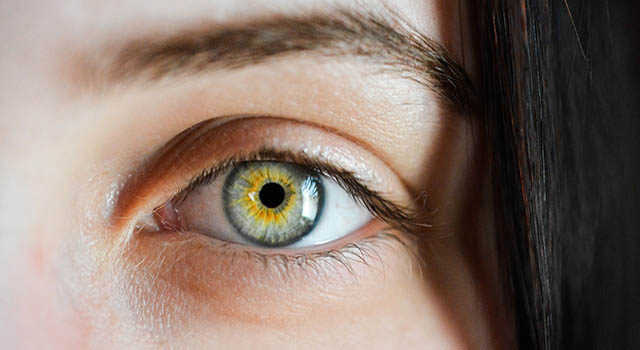Different sized pupils could indicate a serious health issue requiring urgent medical care.
The pupil is the black hole in the center of the iris, the part that gives your eye its unique color.
The pupil controls the amount of light that enters the eye by widening and constricting in response to light intensity.
Occasionally, the two pupils can appear unequal in size.
In most cases, having two different pupil sizes is not a cause for concern — but in some cases, it can indicate a serious problem, requiring emergency medical attention.
What causes unequal pupils?
Anisocoria may be diagnosed if one pupil is bigger or smaller than the other. In some cases, the pupils may continue to respond normally to light, while in other cases, their responses may differ from one another.
Caution: If you notice that your pupils suddenly become unequal in size, seek immediate medical attention as this can be a symptom of a medical condition that requires prompt treatment.
There are four main types and causes of anisocoria:
1. Simple anisocoria
Also called essential anisocoria and physiologic anisocoria, this is the most common type of anisocoria, that has been shown to affect 20 percent of people.
This is a benign condition that causes the pupils to differ in size, usually by up to one millimeter in diameter, without affecting the pupils’ response to light. This condition can be intermittent or constant, and may even go away on its own without medical intervention.
The precise cause of this type of anisocoria has yet to be discovered.
If you have different size pupils, contact an eye doctor near you, who can diagnose and treat the condition.
SEE RELATED: What Is an Eye Stroke?
2. Pathologic anisocoria
Pathologic anisocoria develops from an underlying disease or condition, often iritis.
Iritis: is a type of uveitis, or inflammatory eye disease, caused by an eye infection, another inflammatory eye disease, or eye trauma.
Symptoms include:
- Red eyes
- Eye pain
- Light sensitivity
- Presence of inflammatory cells in the eye’s anterior chamber
- Pupil constriction of the affected eye
The anisocoria is generally treated with the treatment of the iritis. Though sometimes, the pupils may remain unequal even after the iritis has been treated.
Horner’s syndrome: is usually caused by an underlying medical condition, such as a tumor, spinal cord injury, or stroke— though sometimes, the cause is unknown.
Symptoms include:
- Miosis- constriction of one pupil
- Ptosis– drooping eyelid
- Facial anhidrosis- inability to sweat around the eye
Horner’s syndrome affects the pupils’ ability to dilate normally in low light (within five seconds) and instead generally leads to a delayed pupil response of around 10 to 20 seconds.
Adie’s tonic pupil: generally affects only one pupil, and can develop when the nerves that innervate the muscles responsible for pupil constriction, become damaged. When this occurs, the affected pupil usually does not respond to light normally.
In most cases, the cause of Adie’s tonic pupil is not understood, though it primarily affects women ages 20 to 40 years.
Third nerve palsy: The third cranial nerve (oculomotor nerve) innervates some of the muscles that control eyelid and eye movement, as well as pupil size. If this nerve becomes paralyzed from an aneurysm, brain hemorrhage, or tumor, the pupil will appear dilated at all times.
Children with third nerve palsy can develop this condition from a migraine, meningitis, or other severe infection.
Symptoms may also include:
- Ptosis (drooping eyelid)
- Outward eye turn
- Poor accommodation, or ability to shift focus
Third nerve palsy is considered a medical emergency. If these symptoms come on suddenly, seek immediate medical attention.
3. Mechanical anisocoria
Mechanical anisocoria can occur following a trauma to the eye that has caused damage to the iris or the structures around it.
Eye trauma can be caused by an eye injury, eye surgery complications, angle-closure glaucoma, iritis, or uveitis.
Mechanical anisocoria may also develop from an ocular tumor or congenital condition that affects the structure of the iris, such as:
- Total or partial absence of the iris (aniridia)
- Gap in the iris (coloboma)
- Pupil displacement and lens dislocation (ectopic pupil)
4. Pharmacologic anisocoria
Pharmacologic anisocoria can develop as a side effect from certain medications.
Medications that may cause this condition generally include SSRIs (selective serotonin reuptake inhibitors) used to treat depression, transdermal scopolamine patches used to treat nausea and motion sickness from chemotherapy, and certain glaucoma eye drops.
What to do if your pupils are unequal
If you notice that your pupils are not equal in size, schedule an eye exam as soon as possible to rule out any serious conditions.
Be sure to inform your doctor if you recently suffered a head or eye injury and/or if you are experiencing any of the following:
- Vision loss
- Double vision
- Eye pain
- Ptosis
- Headaches
- Neck pain
LEARN MORE: Guide to Eye Conditions
Schedule an appointment with an eye doctor near you to examine your pupils and discuss the best treatment options.
The sooner you determine the cause of anisocoria, the sooner your eye doctor can advise the most appropriate treatment plan.


